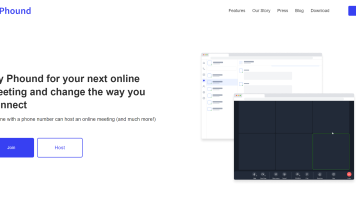Sagem-Interstar Inc. (Sagem Communications) of Montreal, Canada has been selling advanced fax server solutions for IP networks globally since 2002. Their technology leverages IP telephony and Unified Communications (UC) systems to boost productivity, collaboration activities and overall ROI.
At VoiceCon I caught up with Sagem’s John Nikolopoulos, Director of Marketing; Corey Wilson, Product Specialist; and Gisele Seto, Marketing Communications Manager.
Sagem-Interstar had just launched their XMediusFAX Release 6.0, said to be the industry’s first T.38 FoIP solution to offer major enterprise and remote branch office fax survivability. Automatic failover has long been a big topic in mission critical telecom applications, and Sagem’s “self healing” technology enables automatic failover to branch office facilities – if the WAN goes down, it resorts to other available forms of transport (such as the local PSTN interface at the branch office) and the branch office can switch to a local “lighter” app that can deal with its faxing needs.
The system runs in conjunction with Cisco ISRs (Integrated Services Routers), Cisco’s line of branch office routers/gateways, many of which come with built-in Virtual Private Network (VPN) hardware encryption and acceleration, firewall, IDS/IPS, NAT, QoS support and IP telephony functionality. The Network Module Extension (NME) is a card which allows third party applications to be installed on ISR. It contains a processor, memory, hard drive and an optional network card. The Application eXtension Platform (AXP) is Cisco’s operating system on the NME Board, which is based on a Linux environment haiving a specific software library to communicate with the ISR. When Van Meter Industrial, a large North American electrical and automation wholesale distributor (and long-time XMediusFAX SP customer), first deployed the new XMediusFAX 6.0 branch survivability FoIP solution within a Cisco AXP/ISR 2800 environment (to deal with the possible loss of fax service at a remote branch due to WAN link problems), they quickly performed the AXP integration by just plugging the NME module into their existing Cisco ISR router and configuring the software.
“XMediusFAX software solutions provide users the flexibility to rapidly send and receive faxes from many kinds of interfaces such as desktop email clients, MFPs, cell phones, and so forth. We can support these with guaranteed performance”, says John Nikolopoulos. “By minimizing fax application downtime, an organization’s productivity, revenue, and even corporate reputation are preserved. Our intelligent engine can exploit advanced routing policy-based routing rules and allows you to switch ports as necessary. And of course, our system is highly scalable as well as fault resilient, without compromising its security features.”
In all, XMediusFAX software take the global TDM to IP migration trend in stride by streamlining your operations and lowering the Total Cost of Ownership (TCO). It can also deal with such “moving targets” as unified communications, virtualization and increasingly versatile multifunction devices (MFDs).
Perhaps most importantly it can give companies who rely on fax the peace of mind to know they can conduct business via this legally binding technology, even when there are WAN outages which may disable their other forms of communications.





